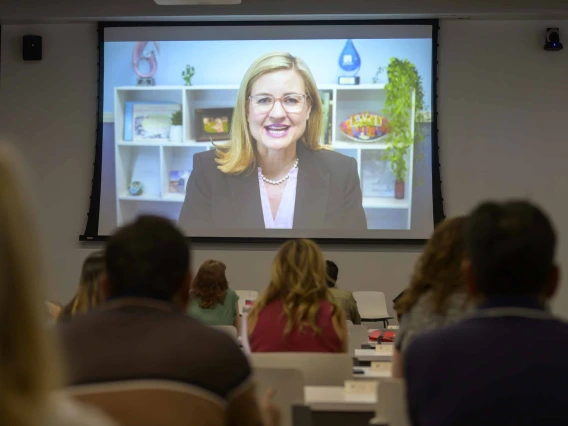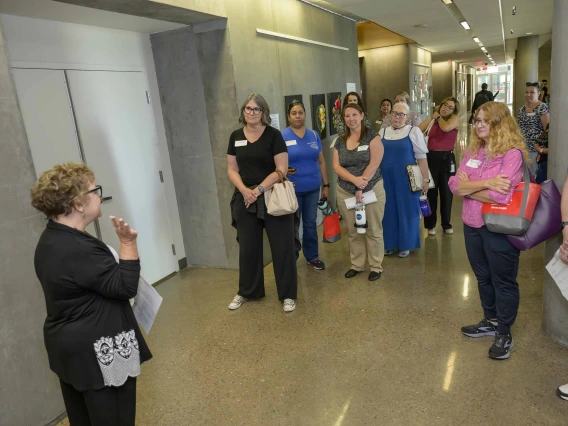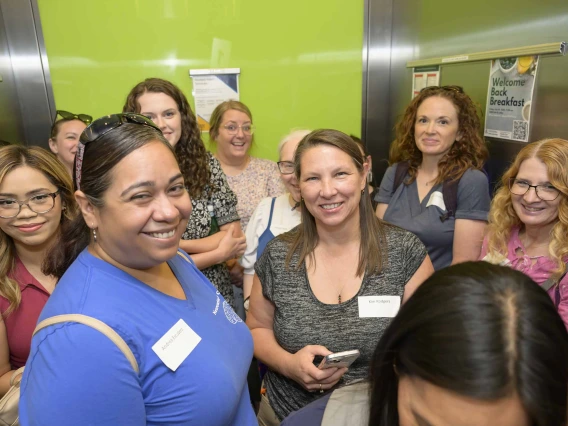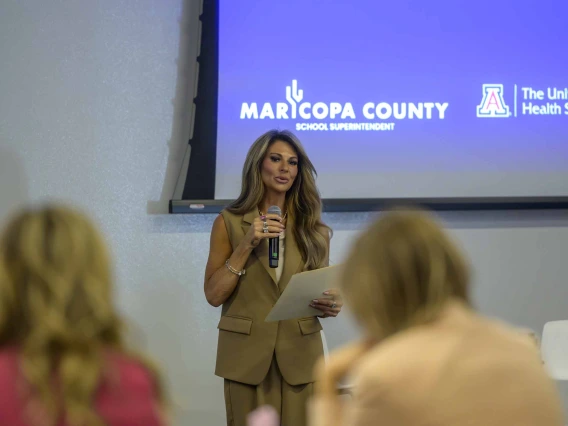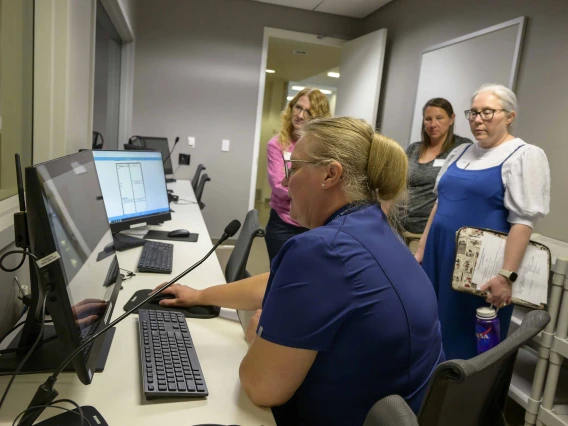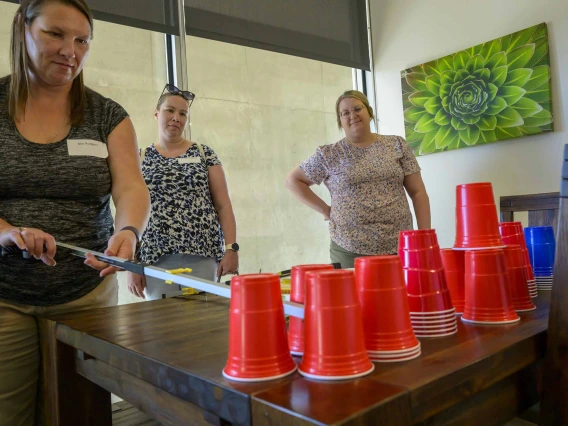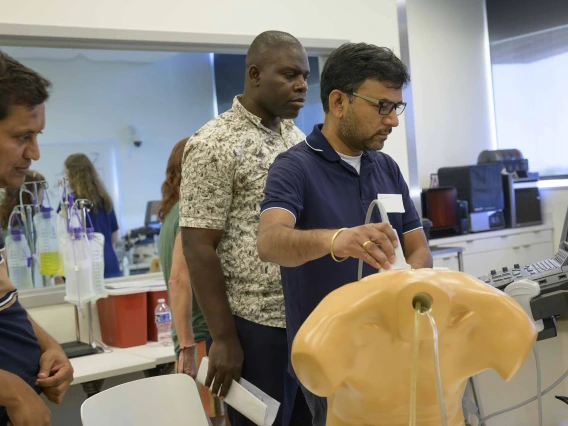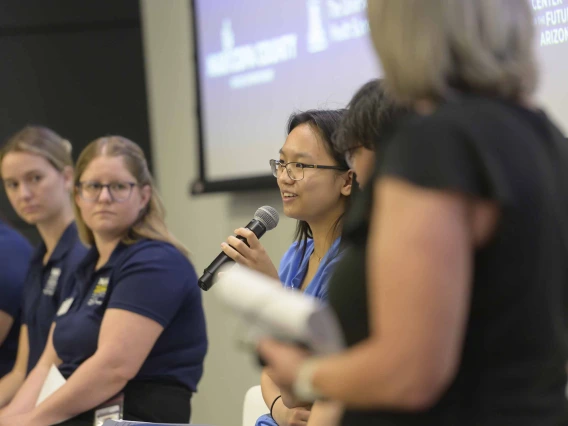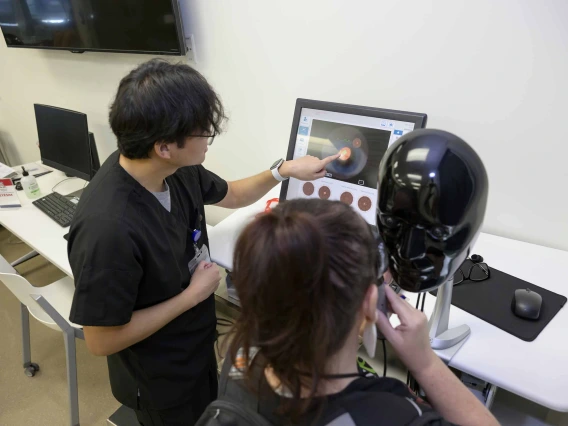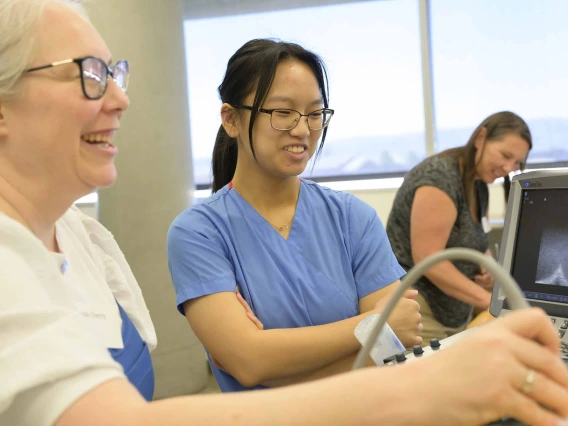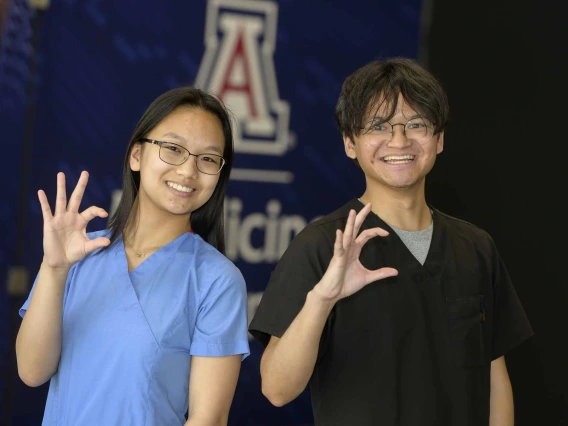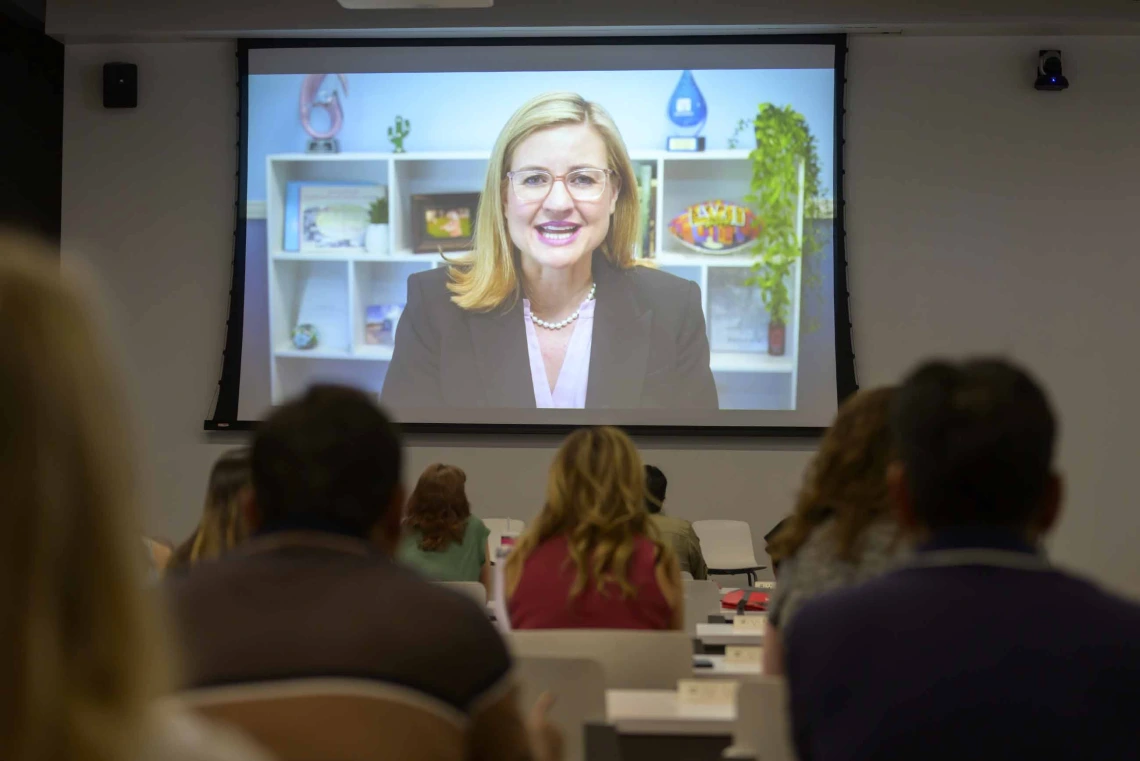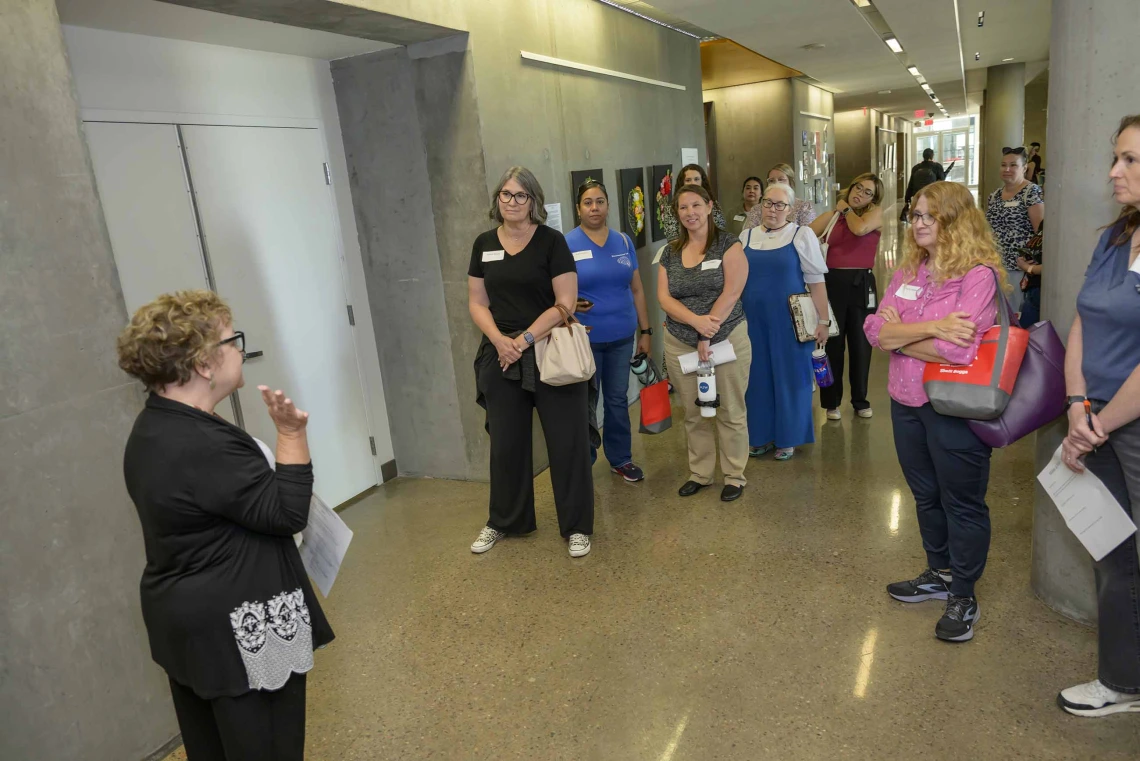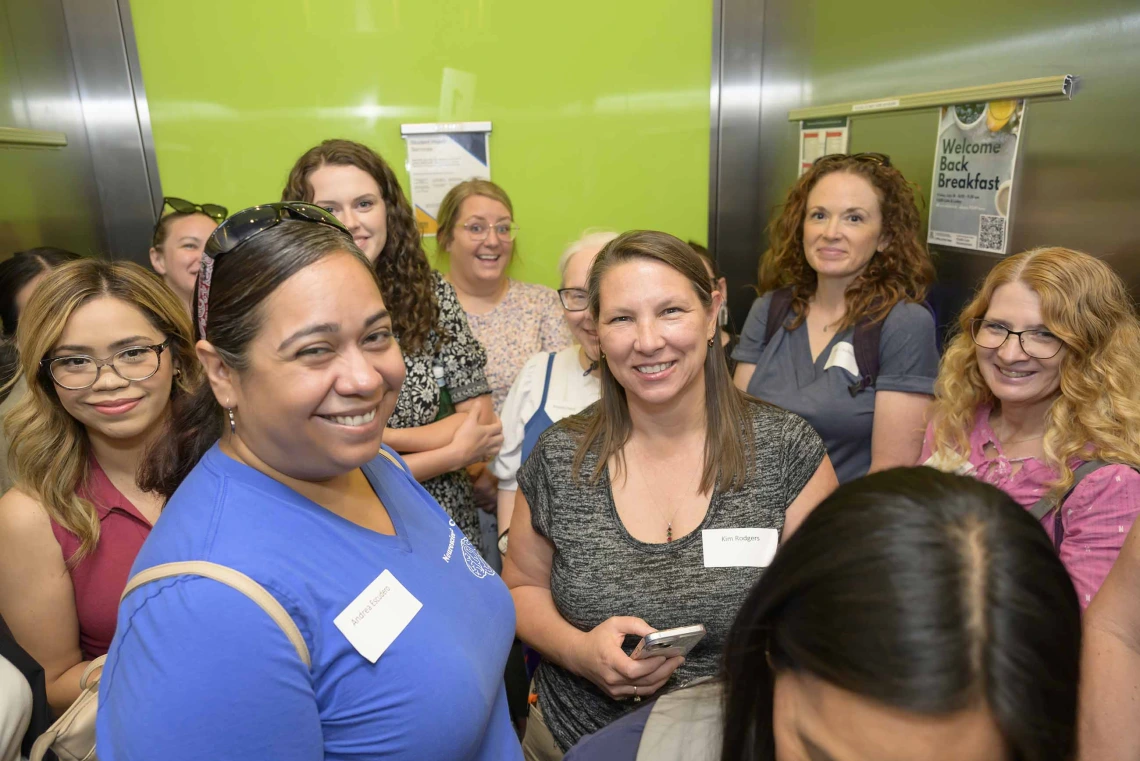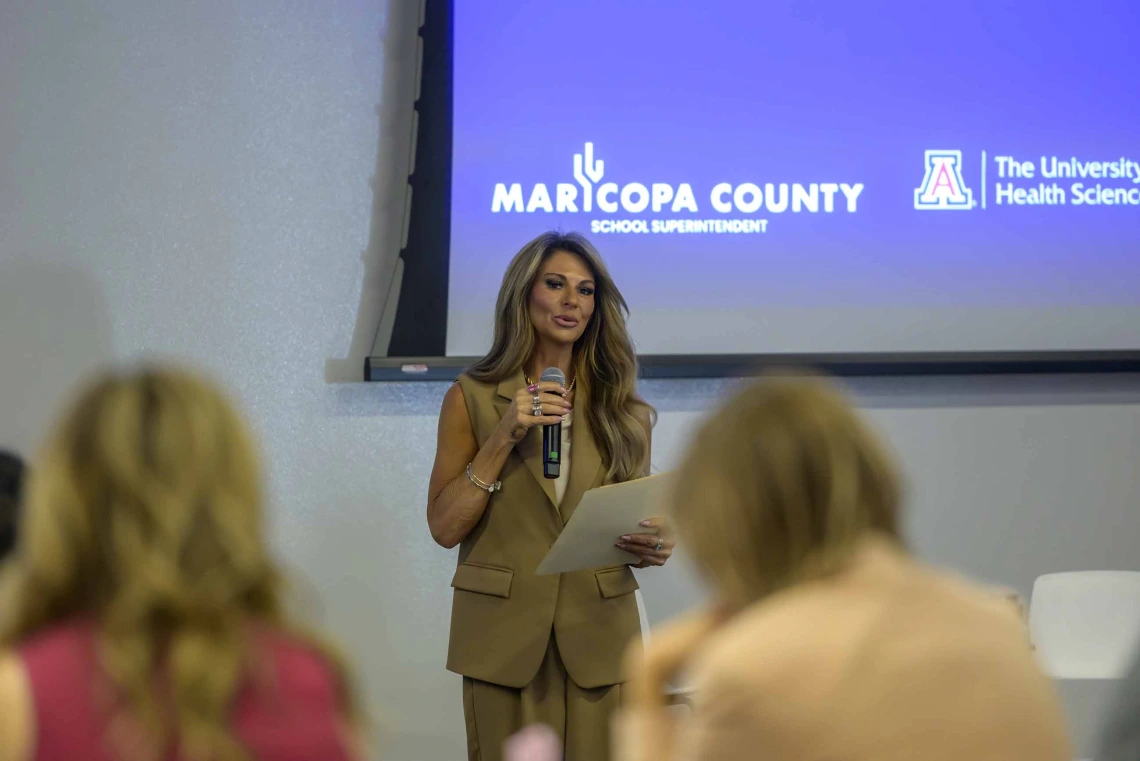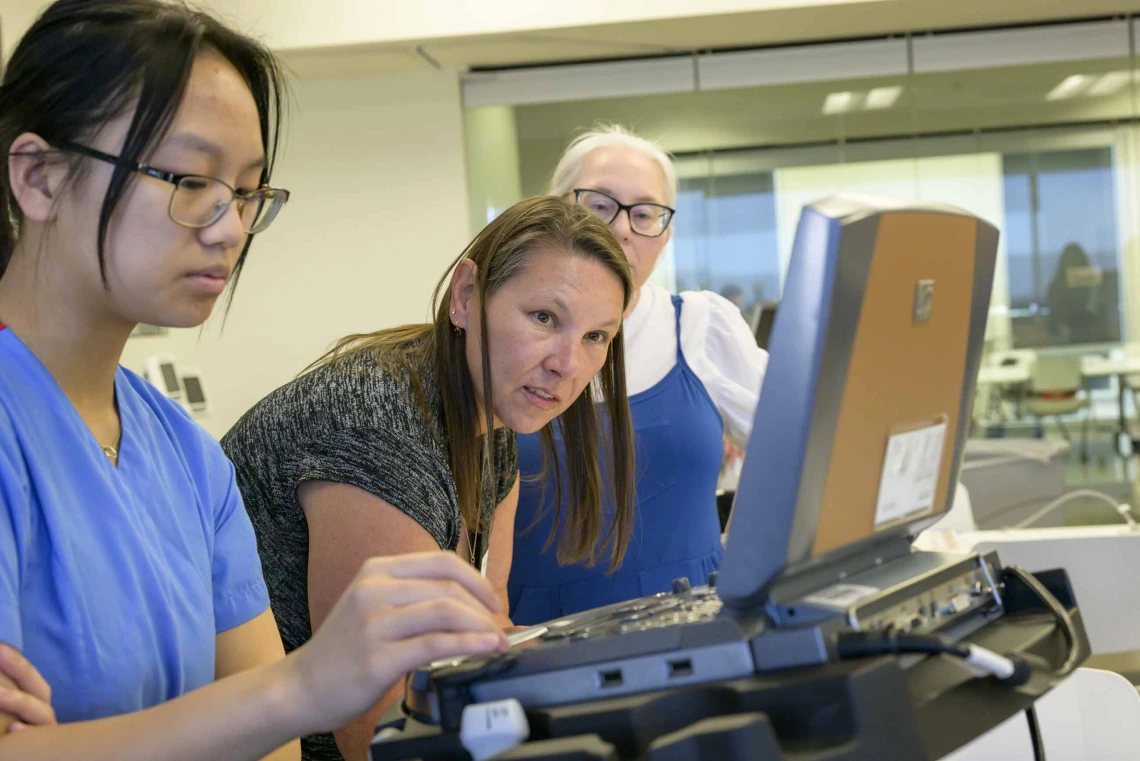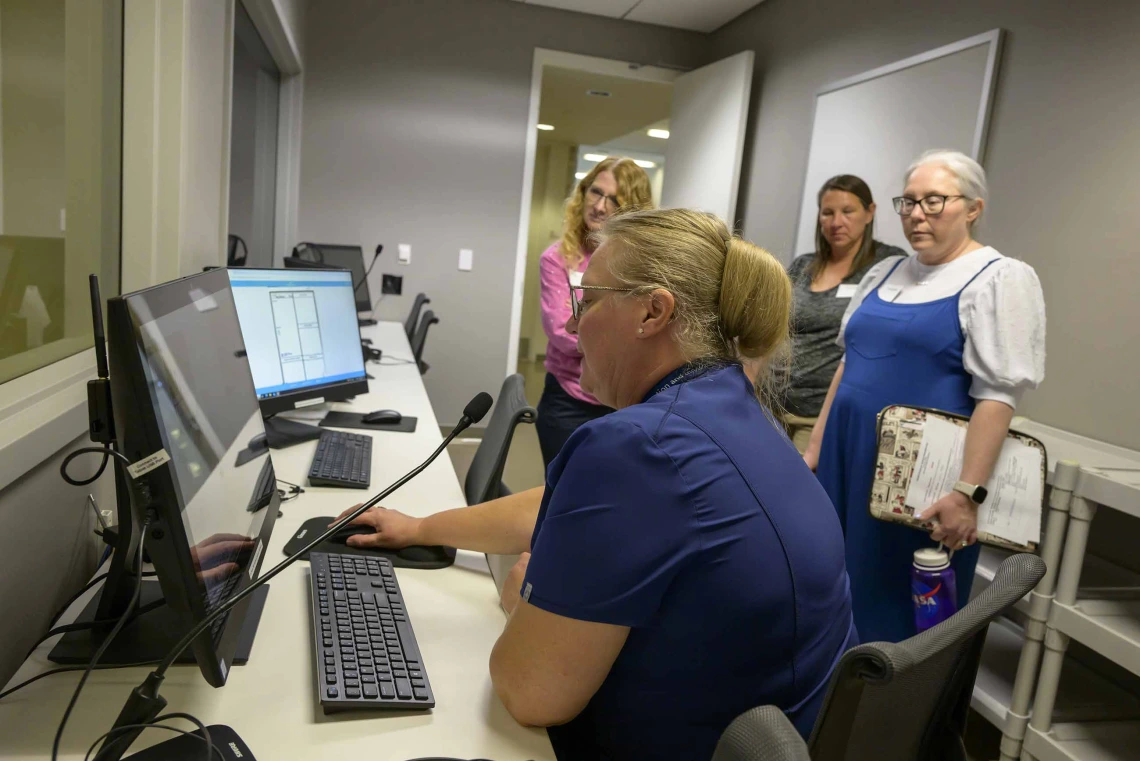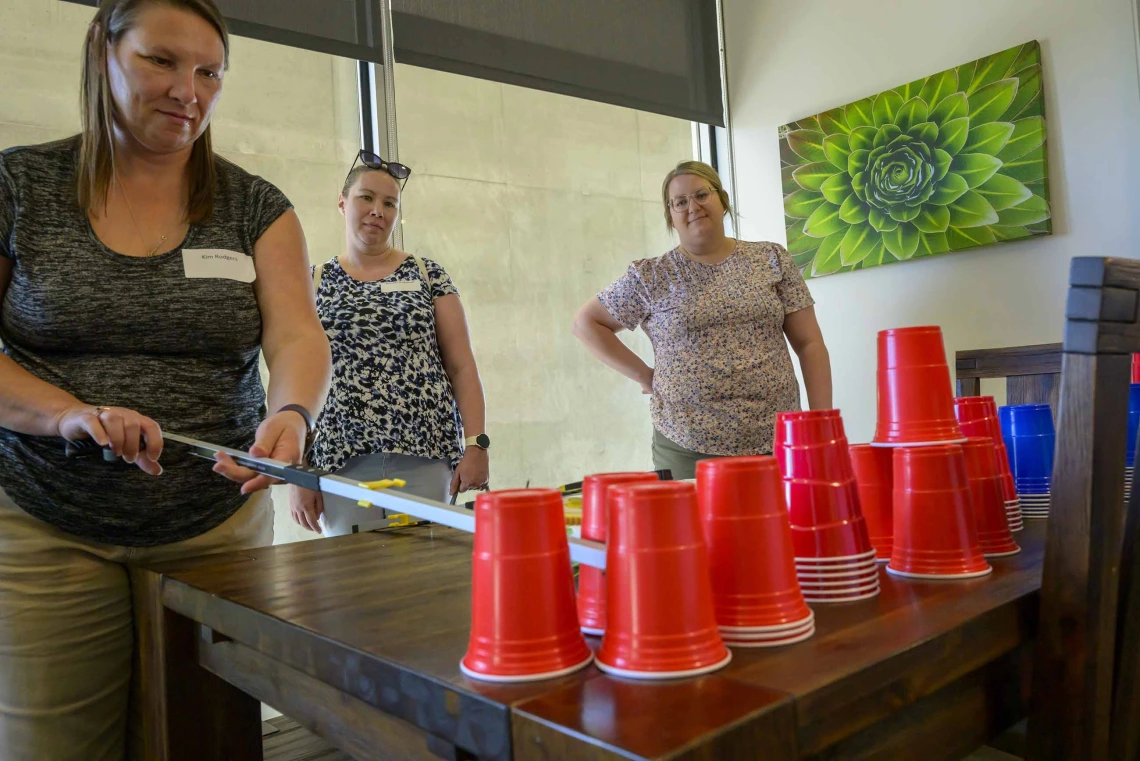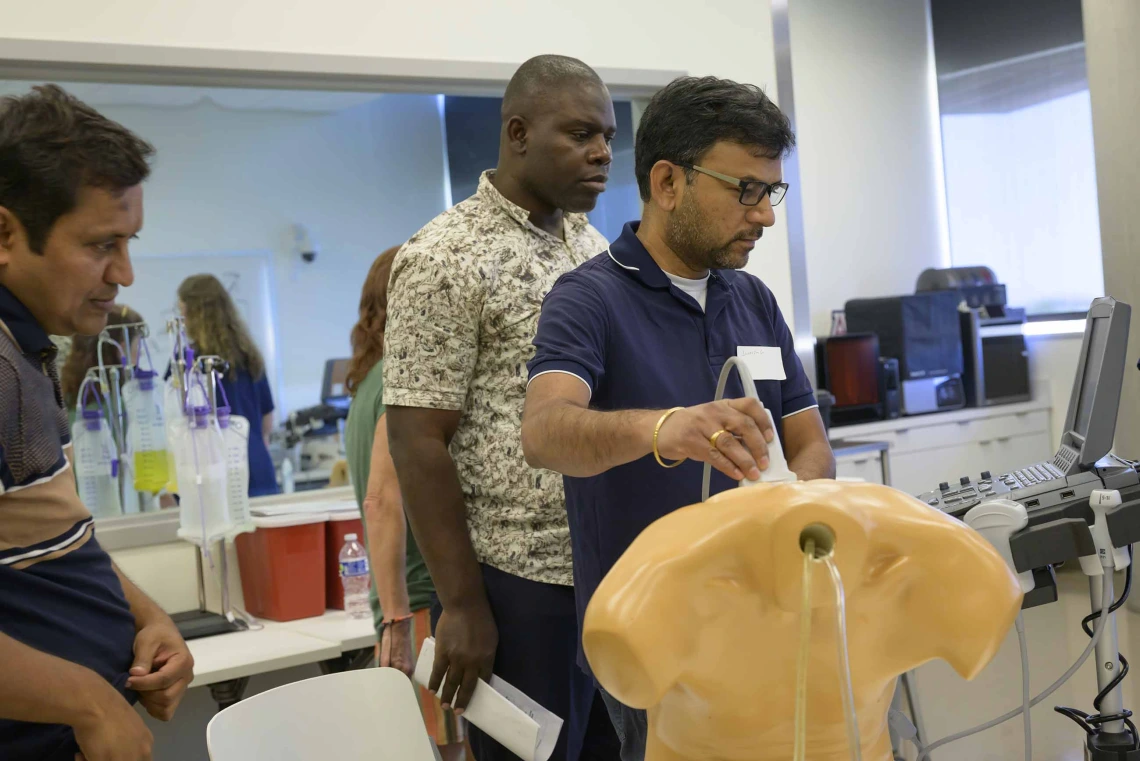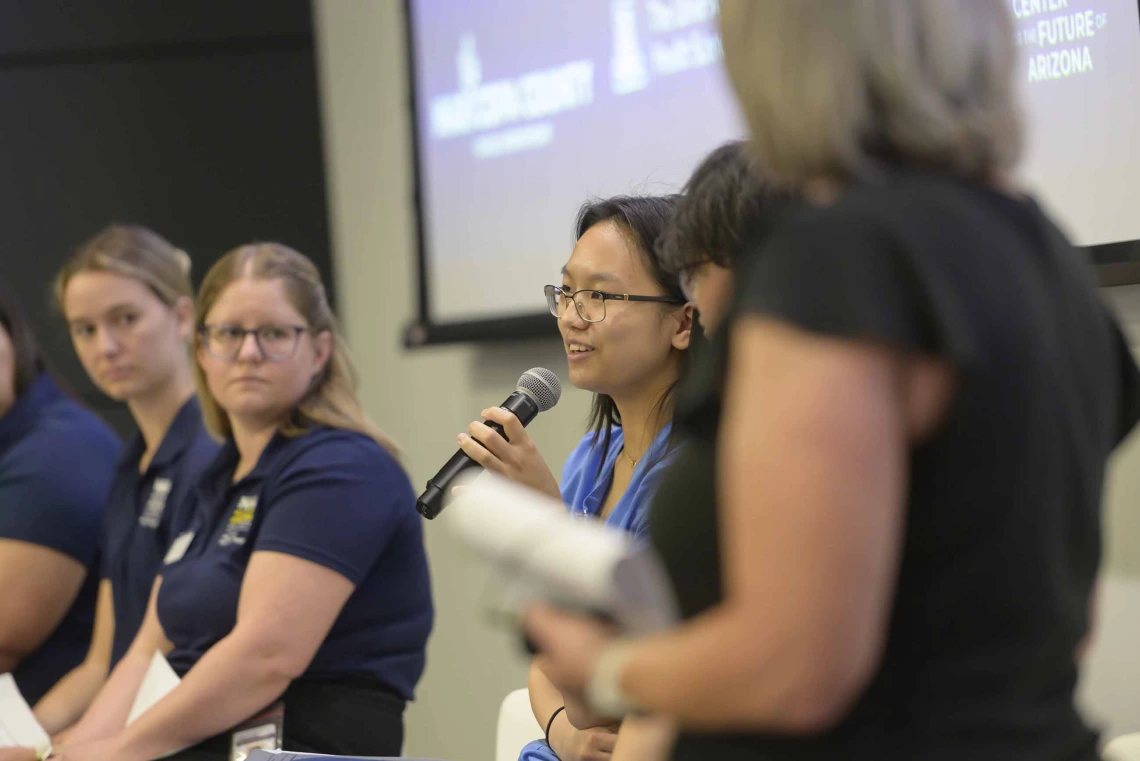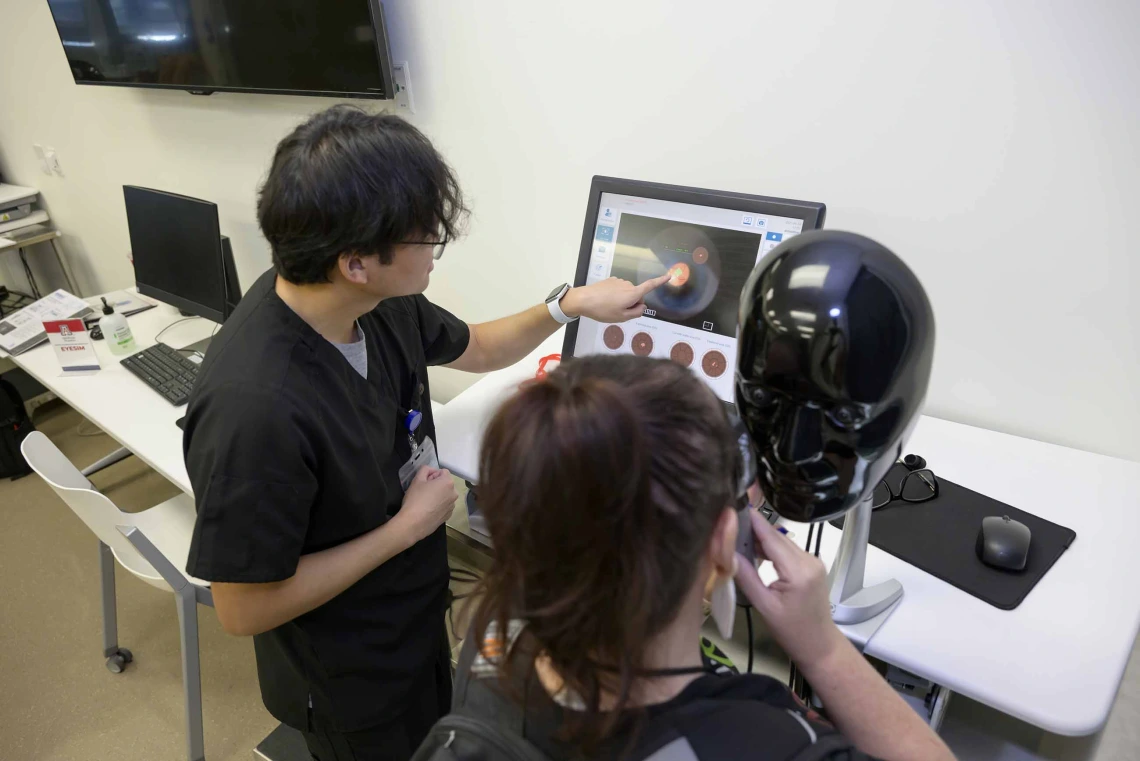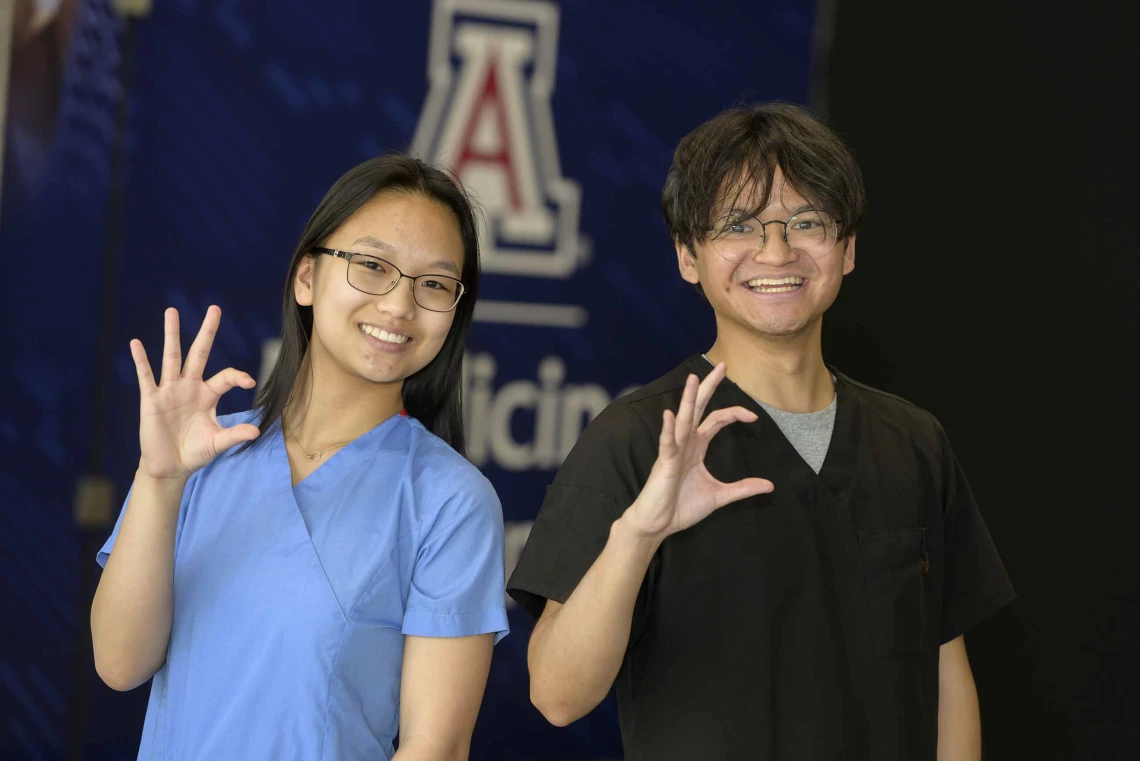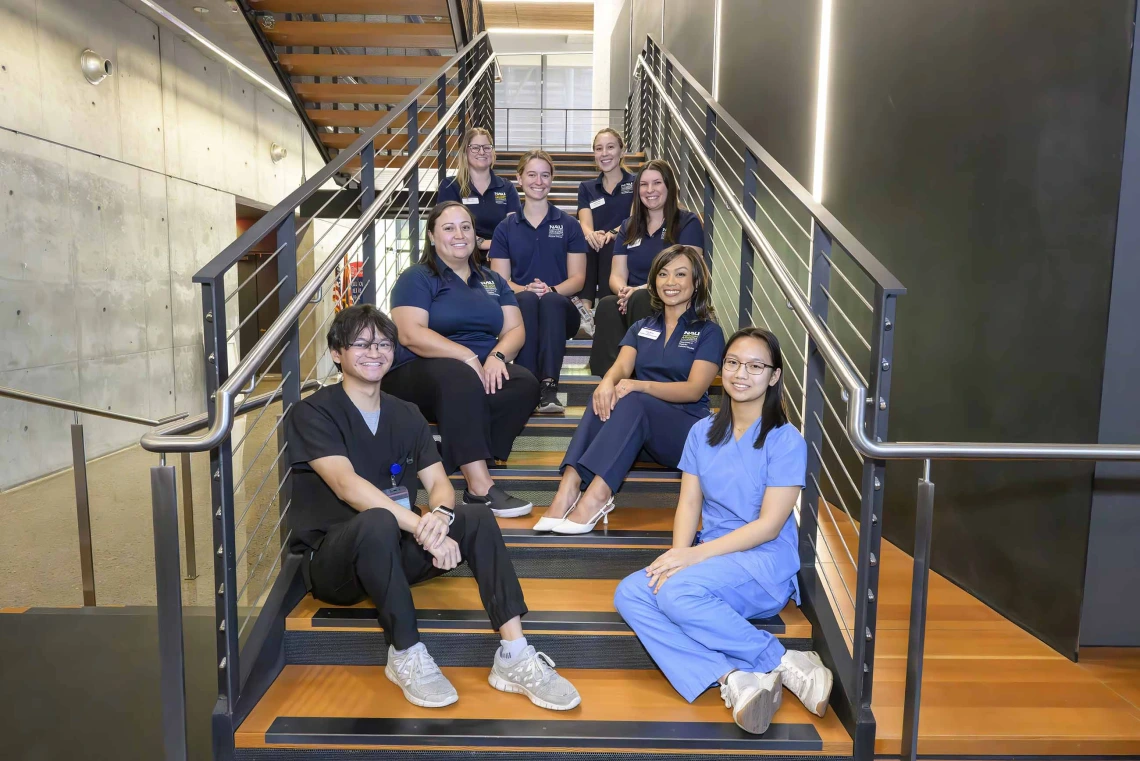Teachers step into health science students’ shoes to spark STEM futures
The U of A Health Sciences Teacher Education Day immersed educators in high-tech medical simulations to cultivate future STEM professionals across the state.
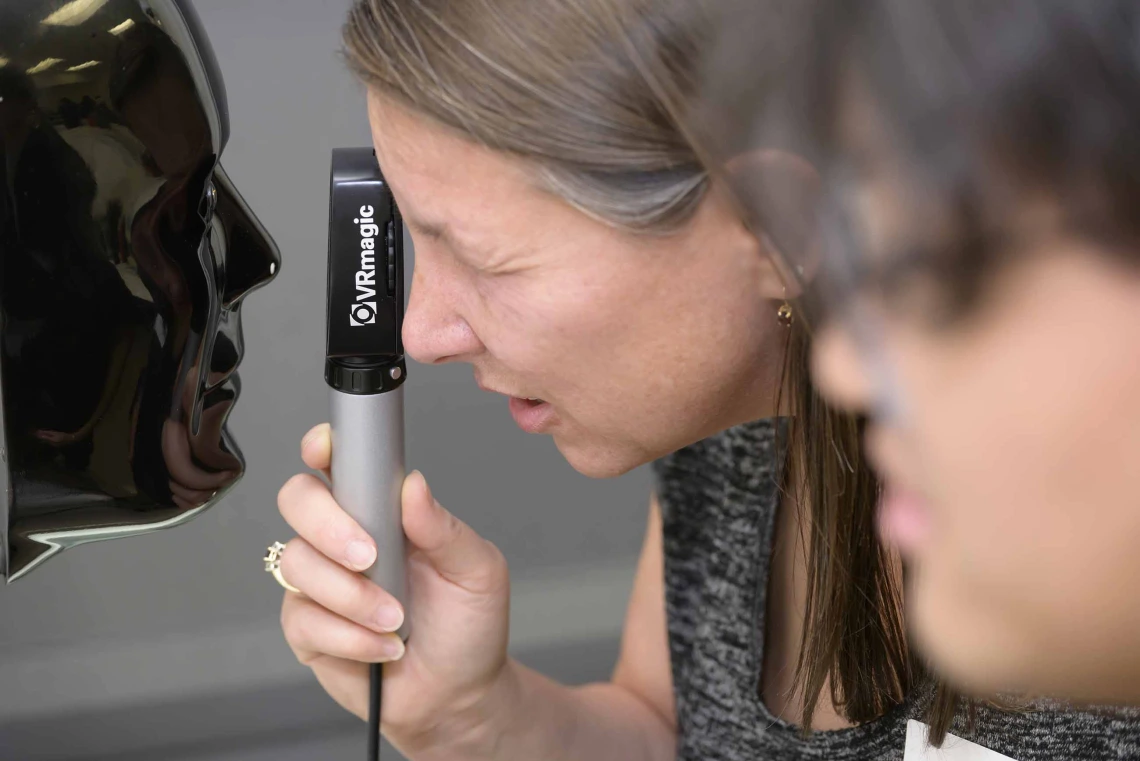
Kim Rodgers, a high school bioscience teacher in Glendale, prepares to inspire her students’ STEM futures by examining the eye’s inner workings through an ophthalmology simulator during the University of Arizona Health Sciences’ Teacher Education Day.
Photo by Kris Hanning, U of A Health Sciences Office of Communications
Kim Rodgers, a Mountain Ridge High School teacher in Glendale, Arizona, peered through an ophthalmology simulator and grinned, marveling at the eye’s inner workings in a way her students might. At the University of Arizona Health Sciences’ annual Teacher Education Day, Rodgers and dozens of educators stepped into the role of students, mastering cutting-edge simulations to inspire underserved youth to attend college.
The event advances the university’s land-grant mission of empowering Arizona communities as a strategic investment in the future of Arizona’s health care workforce. It equips educators including Rodgers with hands-on experiences and resources, including STEM kits for their classrooms, to spark student interest and expand the U of A’s impact.
“This event enables us to collaborate with the City of Phoenix and Maricopa County School Superintendent’s office, keeping the Health Sciences’ presence strong with partners who have invested in our vision,” said Caroline Berger, U of A Health Sciences’ director of corporate and community relations in Phoenix. “It showcases our facilities and programs, inspiring students and teachers to see the U of A as a vital resource for Arizona’s future.”
At the Center for Simulation and Innovation, educators experienced high-tech simulations firsthand. They used ultrasound wands to detect abnormalities, practiced laparoscopic surgery and interacted with patient manikins, just as medical students do in their training.
They also explored Northern Arizona University’s occupational and physical therapy programs, gaining insights into diverse health professions such as physician assistant studies and sports therapy. During dynamic panel session, students from the College of Medicine – Phoenix and NAU shared their real-world experiences to help educators guide their students toward careers in health care.
“The simulations, professional degree conversations and collaboration with other teachers gave us resources to help students understand career paths and stay in Arizona to contribute to the medical science field,” said Rodgers, who was recently named the 2025 Michael A. Cusanovich Bioscience Educator of the Year by the Arizona Bioindustry Association.
By immersing teachers in student-like experiences and sending them back to their classrooms as STEM ambassadors, the U of A Health Sciences is laying the foundation for Arizona’s next generation of scientists, health care providers and innovators.
Contact
Blair Willis
U of A Health Sciences Office of Communications
520-419-2979, bmw23@arizona.edu


